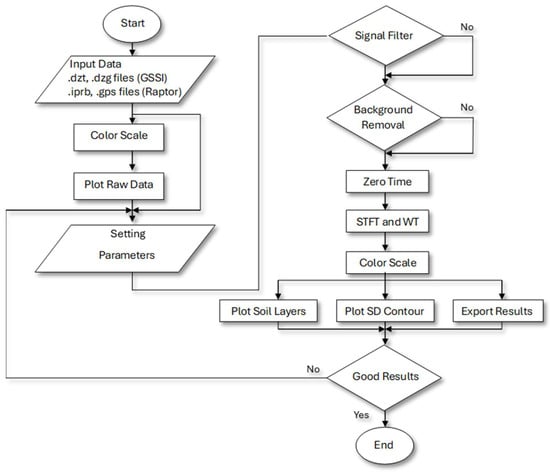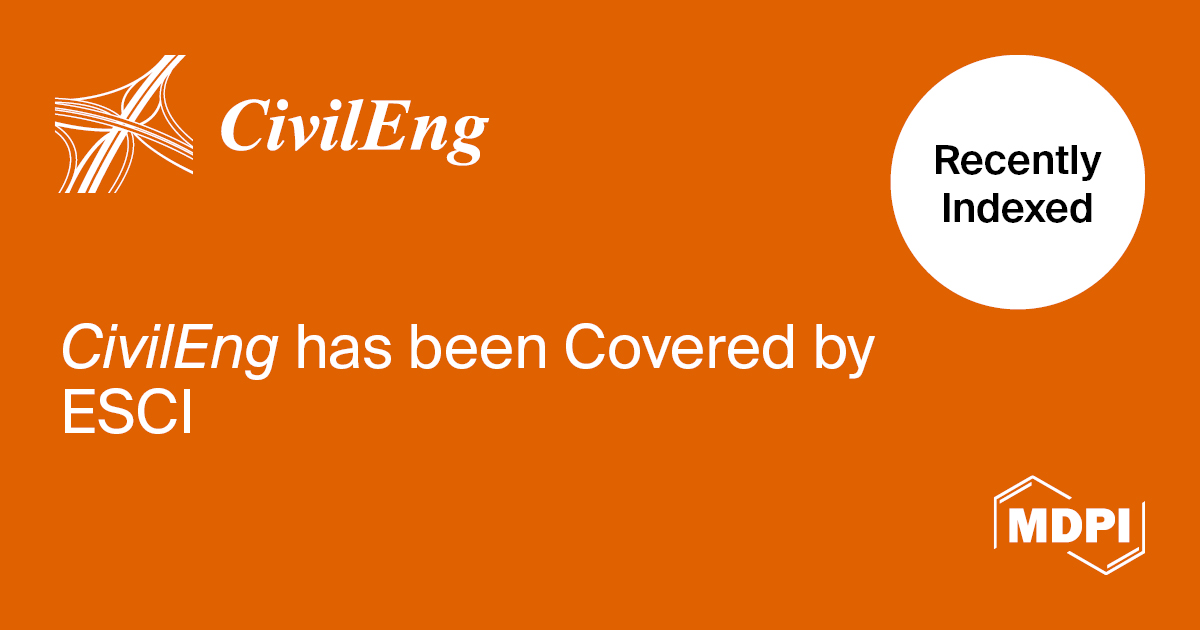Journal Description
CivilEng
CivilEng
is an international, peer-reviewed, open access journal of civil engineering, published quarterly online by MDPI.
- Open Access— free for readers, with article processing charges (APC) paid by authors or their institutions.
- High Visibility: indexed within Scopus, ESCI (Web of Science) and other databases.
- Rapid Publication: manuscripts are peer-reviewed and a first decision is provided to authors approximately 37.7 days after submission; acceptance to publication is undertaken in 7.7 days (median values for papers published in this journal in the second half of 2023).
- Recognition of Reviewers: APC discount vouchers, optional signed peer review, and reviewer names published annually in the journal.
Latest Articles
Railroad Infrastructure Management: A Novel Tool for Automatic Interpretation of GPR Imaging to Minimize Human Intervention in Railroad Inspection
CivilEng 2024, 5(2), 378-394; https://doi.org/10.3390/civileng5020019 - 16 Apr 2024
Abstract
Regular monitoring and inspection of military railroad tracks are necessary to ensure the safe transportation of military freight. Manual railroad inspection has drawbacks and limitations that can impact accuracy and efficiency. This study introduces a novel tool designed to automate Ground Penetrating Radar
[...] Read more.
Regular monitoring and inspection of military railroad tracks are necessary to ensure the safe transportation of military freight. Manual railroad inspection has drawbacks and limitations that can impact accuracy and efficiency. This study introduces a novel tool designed to automate Ground Penetrating Radar (GPR) imaging interpretation for railroad ballast condition assessment, aiming to reduce human intervention in inspections. The tool uses advanced signal processing techniques, such as the Short-Time Fourier Transform (STFT) and Wavelet Transform (WT), to quantify ballast fouling levels accurately, enhancing maintenance and safety protocols for railroad tracks. Validation through comprehensive testing, including two case studies, demonstrates the tool’s superior efficacy over traditional manual inspection methods. This research represents a pivotal step towards more efficient and reliable infrastructure management, ensuring critical railroad systems’ safety and operational integrity.
Full article
(This article belongs to the Special Issue Feature Papers in CivilEng)
►
Show Figures
Open AccessArticle
Energy-Based Design of Buckling-Restrained Steel Braced Frames for Concurrent Occurrences of Earthquake and Wind
by
Taonian Shan and Eric M. Lui
CivilEng 2024, 5(2), 343-377; https://doi.org/10.3390/civileng5020018 - 15 Apr 2024
Abstract
This paper describes the development of a dual hazard spectrum for use in the dynamic analysis of steel frames subject to the combined effects of earthquakes and wind. The proposed spectrum is obtained by combining the power spectra of earthquakes and wind using
[...] Read more.
This paper describes the development of a dual hazard spectrum for use in the dynamic analysis of steel frames subject to the combined effects of earthquakes and wind. The proposed spectrum is obtained by combining the power spectra of earthquakes and wind using the square root of the sum of squares (SRSS) combination method. An equivalent time excitation function is then computed using an inverse fast Fourier transform (IFFT) and serves as input for the dynamic analysis. Using time-history analysis on the OpenSees platform, the dynamic responses expressed in terms of peak and residual inter-story and roof drifts for two multistory steel frames located in two US cities (Los Angeles and Charleston) are obtained to demonstrate that designing these buildings based on just one hazard may not be adequate. For frames that are considered under-designed, an energy-based design procedure that uses buckling-restrained braces (BRBs) to dissipate the excess energy imparted to these frames is proposed so they will satisfy the FEMA 356 recommended drift limits for the performance levels of immediate occupancy and life safety.
Full article
(This article belongs to the Special Issue Feature Papers in CivilEng)
►▼
Show Figures
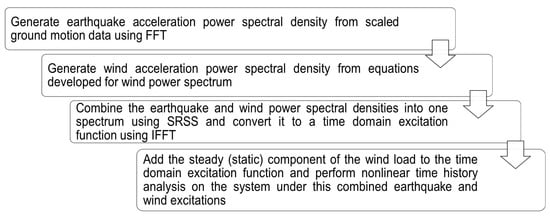
Figure 1
Open AccessReview
Modeling Techniques, Seismic Performance, and the Application of Rocking Shallow Foundations: A Review
by
Musab Aied Qissab Al-Janabi, Duaa Al-Jeznawi and Luís Filipe Almeida Bernardo
CivilEng 2024, 5(2), 327-342; https://doi.org/10.3390/civileng5020017 - 11 Apr 2024
Abstract
The intriguing rocking behavior of foundations has attracted the attention of both researchers and professionals, owing to its beneficial characteristics such as energy absorption and self-adjusting capability. This paper offers a thorough examination of various modeling techniques, seismic performance evaluation methods, and the
[...] Read more.
The intriguing rocking behavior of foundations has attracted the attention of both researchers and professionals, owing to its beneficial characteristics such as energy absorption and self-adjusting capability. This paper offers a thorough examination of various modeling techniques, seismic performance evaluation methods, and the practical application of innovative rocking shallow foundations. While conventional fixed-base designs can absorb seismic energy, they often suffer from lasting damage due to residual deformation. In contrast, rocking foundation structures facilitate controlled rocking movements by loosening the connection between the structure and the foundation, thereby enhancing overall stability. Historical studies dating back to the 19th century demonstrate the effectiveness of rocking foundations in reducing seismic impact and ductility demands, leading to cost savings. Furthermore, this paper extends its focus to contemporary considerations, exploring modern modeling techniques, seismic performance assessments, and practical applications for rocking shallow foundations. By highlighting their role in improving structural resilience, this study investigates seismic hazard analysis, geological factors, and site-specific conditions influencing foundation behavior. It covers essential aspects such as dynamic responses and modeling methodologies, drawing insights from real-world case studies. Through a comprehensive review of both numerical and experimental investigations, the article provides a synthesis of current knowledge and identifies avenues for future research.
Full article
(This article belongs to the Section Structural and Earthquake Engineering)
►▼
Show Figures
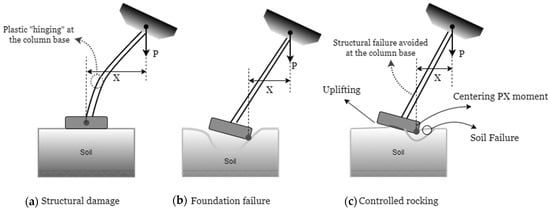
Figure 1
Open AccessArticle
Influence of the Nature of Cement on the Physical and Mechanical Properties of Soil Concretes from Sandy Clay and Laterite
by
Alain Kamdem, Emmanuel Elat, Javad Eslami, Jean Chills Amba, Moussa Sali, Michel Mbessa and Albert Noumowé
CivilEng 2024, 5(2), 307-326; https://doi.org/10.3390/civileng5020016 - 07 Apr 2024
Abstract
Soil concrete is a material produced by mixing the soil at the site with a hydraulic binder. This paper aims to study the influence of the nature of binder on the physical and mechanical properties of soil concrete. For the mixtures, three types
[...] Read more.
Soil concrete is a material produced by mixing the soil at the site with a hydraulic binder. This paper aims to study the influence of the nature of binder on the physical and mechanical properties of soil concrete. For the mixtures, three types of soil were chosen and studied: sandy clay with a granular class of 0/5 (SA5), laterite with a granular class of 0/5 (LA5), and laterite with a granular class of 0/10 (LA10). Three different cements were used: CEM I 52.5, CEM II 42.5, and CEM III 32.5, with cement contents of 150 and 250 kg/m3. The soil concretes were designed for a constant spread of 32–33 cm measured on a mini-slump. The results showed that LA5-based soil concrete has a higher water content of about 8.8% more than SA5 and LA10-based soil concretes. For all the mixtures, the lowest porosity values were obtained with CEM III 32.5, followed by CEM I 52.5, and finally CEM II 42.5. For the three types of cement and the same soil granular size, the compressive strength, static, and dynamic modulus of SA5-based soil concretes are higher than LA5. It was noted that the mechanical properties of soil concretes made with CEM III 32.5 are higher than those made with CEM I 52.5 and CEM II 42.5. Regardless of the type of cement used, the mechanical properties obtained on LA10-based soil concrete are higher than those on LA5-based soil concrete.
Full article
(This article belongs to the Special Issue Feature Papers in CivilEng)
►▼
Show Figures
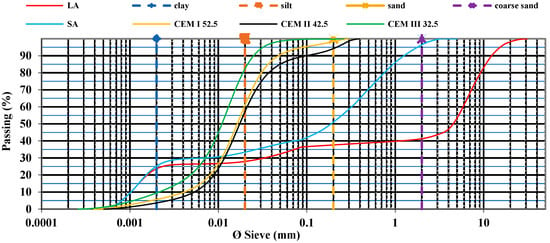
Figure 1
Open AccessArticle
Methods to Increase Fatigue Life at Rib to Deck Connection in Orthotropic Steel Bridge Decks
by
Diwakar KC, Bhim Kumar Dahal and Harish Dangi
CivilEng 2024, 5(1), 288-306; https://doi.org/10.3390/civileng5010015 - 20 Mar 2024
Abstract
Orthotropic steel bridge decks (OSDs) are very popular all over the world because of the low dead load, high stiffness in the longitudinal direction, high strength ratio to weight, and can be used in various types of bridges. The life of these bridges
[...] Read more.
Orthotropic steel bridge decks (OSDs) are very popular all over the world because of the low dead load, high stiffness in the longitudinal direction, high strength ratio to weight, and can be used in various types of bridges. The life of these bridges is affected by fatigue cracks in different portions. One of major areas where the fatigue cracks appear in these bridges is rib-to-deck connection. In this research finite element analysis is carried out by using ABAQUS/CAE 2022 software to determine the ways to increase the fatigue life at rib to deck connection in OSDs. In the first part, smaller models are simulated; stress concentration is analyzed and hot spot stress (HSS) is calculated according to International Institute of Welding (IIW) and Det Norske Veritas (DNV) recommendations. In the second part, a parametric analysis is carried out to analyze the effect of weld penetration, thickness of deck, thickness of rib and rib to deck connection type. In the third part, simulation of models similar to the real field is carried out to determine whether the double welded connections are better than single welded connections. Different models are analyzed for different load cases like single wheel load, double wheel load and also the position of the wheels is changed. The boundary conditions are changed to analyze whether the boundary condition has any significant effect on the result obtained. It is found that thicker decks, thinner ribs, and low penetrated welded connections reduce the stress concentrations at rib to deck connections which ultimately increase fatigue life. Among the parameters examined, deck thickness is the most important parameter. It is found that the percentage of stress increase with percentage decrease in deck thickness follows a power relation. The overall fatigue life of double welded connection is excepted to be lower since the stress concentration is maximum at the weld toe at deck on the outer side of the closed stiffener; however, if the cracks initiate on the inner side of closed stiffener, the cracks at the weld root of single welded connection can propagate much rapidly than the cracks initiating on the inner side of the closed stiffener at the weld toe, thereby reducing the fatigue life of the single-welded specimen significantly.
Full article
(This article belongs to the Special Issue Feature Papers in CivilEng)
►▼
Show Figures
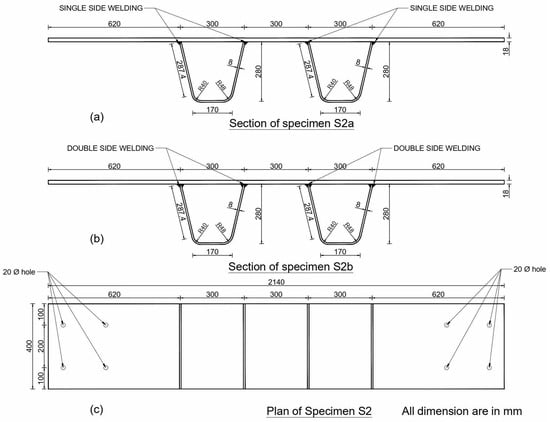
Figure 1
Open AccessSystematic Review
A Systematic Review of Automated Construction Inspection and Progress Monitoring (ACIPM): Applications, Challenges, and Future Directions
by
Reihaneh Samsami
CivilEng 2024, 5(1), 265-287; https://doi.org/10.3390/civileng5010014 - 17 Mar 2024
Abstract
Despite the subjective and error-prone nature of manual visual inspection procedures, this type of inspection is still a common process in most construction projects. However, Automated Construction Inspection and Progress Monitoring (ACIPM) has the potential to improve inspection processes. The objective of this
[...] Read more.
Despite the subjective and error-prone nature of manual visual inspection procedures, this type of inspection is still a common process in most construction projects. However, Automated Construction Inspection and Progress Monitoring (ACIPM) has the potential to improve inspection processes. The objective of this paper is to examine the applications, challenges, and future directions of ACIPM in a systematic review. It explores various application areas of ACIPM in two domains of (a) transportation construction inspection, and (b) building construction inspection. The review identifies key ACIPM tools and techniques including Laser Scanning (LS), Uncrewed Aerial Systems (UAS), Robots, Radio Frequency Identification (RFID), Augmented Reality (AR), Virtual Reality (VR), Computer Vision (CV), Deep Learning, and Building Information Modeling (BIM). It also explores the challenges in implementing ACIPM, including limited generalization, data quality and validity, data integration, and real-time considerations. Studying legal implications and ethical and social impacts are among the future directions in ACIPM that are pinpointed in this paper. As the main contribution, this paper provides a comprehensive understanding of ACIPM for academic researchers and industry professionals.
Full article
(This article belongs to the Section Construction and Material Engineering)
►▼
Show Figures
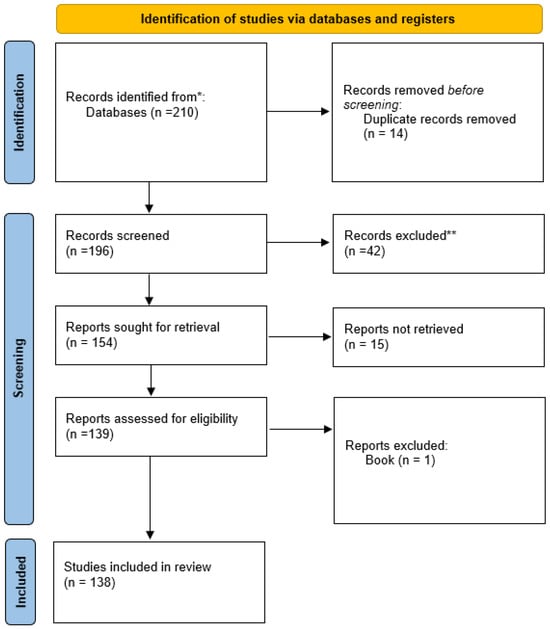
Figure 1
Open AccessArticle
Effect of the Rehydration Method on the Physical–Mechanical Properties of CO2-Cured Magnesium-Based Fiber Cement Boards
by
Adriano G. S. Azevedo, Juan Camilo Adrada Molano, Igor Parente, Taís O. G. Freitas, Aires Camões, Paulina Faria and Holmer Savastano, Jr.
CivilEng 2024, 5(1), 247-264; https://doi.org/10.3390/civileng5010013 - 16 Mar 2024
Abstract
This article analyzes the effect of the rehydration method on the physical–mechanical properties of accelerated carbonation-cured magnesium-based fiber cement boards. The rehydration process of the boards was analyzed in conjunction with the analysis of the pre-curing time before accelerated carbonation (24, 48, and
[...] Read more.
This article analyzes the effect of the rehydration method on the physical–mechanical properties of accelerated carbonation-cured magnesium-based fiber cement boards. The rehydration process of the boards was analyzed in conjunction with the analysis of the pre-curing time before accelerated carbonation (24, 48, and 72 h before carbonation), resulting in eight different curing parameters used in this investigation. The physical–mechanical performance and microstructural characteristics of magnesium oxysulfate boards before and after carbonation were investigated by water absorption, apparent porosity, and bulk density using the four-point bending test, X-ray diffraction, thermogravimetric analysis, and scanning electron microscopy. According to the results, the accelerated carbonation process improved the mechanical properties of the boards. The samples that carbonated after 48 h showed a higher modulus of rupture. The rehydration process of the composites before carbonation led to enhancements in the pre-cured boards for 48 and 72 h, demonstrating that carbonation occurred more effectively after water rehydration. The mechanical improvements were associated with the formation of hydration products, which preferentially formed in the pores and voids of the fiber cement matrix. These carbonation products altered the physical properties of the composites, increasing the density of the boards and reducing the void volume. The decomposition of the formed carbonates was confirmed by thermogravimetric analysis, which indicated that the rehydration process favored the carbonation of the composites.
Full article
(This article belongs to the Section Construction and Material Engineering)
►▼
Show Figures
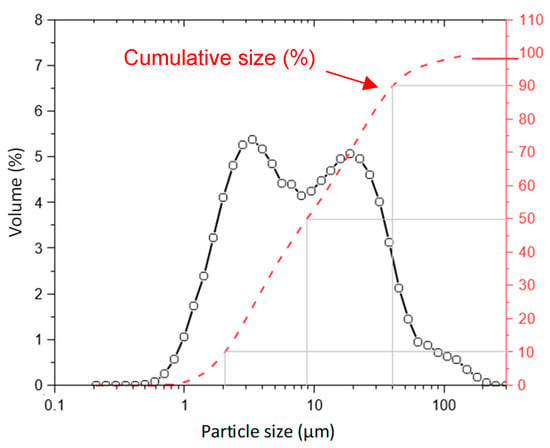
Figure 1
Open AccessArticle
Numerical Analysis of Textile Reinforced Concrete Shells: Force Interaction and Failure Types
by
Iurii Vakaliuk, Silke Scheerer and Manfred Curbach
CivilEng 2024, 5(1), 224-246; https://doi.org/10.3390/civileng5010012 - 12 Mar 2024
Abstract
In the case of solid slabs made of reinforced concrete that are usually subjected to bending, large areas of the structure are stressed well below their load-bearing capacity. Contrary to this are shell structures, which can bridge large spans with little material if
[...] Read more.
In the case of solid slabs made of reinforced concrete that are usually subjected to bending, large areas of the structure are stressed well below their load-bearing capacity. Contrary to this are shell structures, which can bridge large spans with little material if designed according to the force flow. To improve the efficiency of ceiling slabs, we want to utilize the shell load-bearing behavior on a smaller scale by resolving the solid interior accordingly. In order to study a wide range of such constructions virtually, a parametric multi-objective simulation environment is being developed in an ongoing research project. The basic analysis approaches that were implemented are presented in this paper. The basic workflow, the used programs and material models, and their calibration on the tests on textile-reinforced concrete (TRC) samples are described.
Full article
(This article belongs to the Special Issue Feature Papers in CivilEng)
►▼
Show Figures

Figure 1
Open AccessArticle
Experimental Investigation of Mechanical Properties of Concrete Mix with Lightweight Expanded Polystyrene and Steel Fibers
by
Syed Jahanzaib Shah, Asad Naeem, Farzad Hejazi, Waqas Ahmed Mahar and Abdul Haseeb
CivilEng 2024, 5(1), 209-223; https://doi.org/10.3390/civileng5010011 - 17 Feb 2024
Abstract
The demand for lightweight aggregates in concrete compositions for diverse structural and non-structural applications in contemporary building construction has increased. This is to achieve a controllable low-density lightweight concrete, which reduces the overall structural weight. However, the challenge lies in achieving an appropriate
[...] Read more.
The demand for lightweight aggregates in concrete compositions for diverse structural and non-structural applications in contemporary building construction has increased. This is to achieve a controllable low-density lightweight concrete, which reduces the overall structural weight. However, the challenge lies in achieving an appropriate strength in lightweight concrete while maintaining a lower unit weight. This research aims to evaluate the performance of lightweight concrete by integrating expanded polystyrene (EPS) as a partial replacement for coarse aggregate. Test specimens were cast by blending EPS with coarse aggregate at varying proportions of 0%, 15%, 30%, and 45%, while maintaining a constant water-to-binder ratio of 0.60. To enhance the bonding and structural capabilities of the proposed lightweight concrete mixes, reinforcement with 2% and 4% steel fibers by volume of the total concrete mix was incorporated. Silica fume was introduced into the mix to counteract the water hydrophobicity of EPS material and enhance the durability of lightweight concrete, added at a rate of 10% by weight of cement in all specimens. A total of 60 samples, including cylinders and beams, were prepared and cured over 28 days. The physical and mechanical properties of the lightweight EPS-based concrete were systematically examined through experimental testing and compared against a standard concrete mix. The analysis of the results indicates that EPS-based concrete exhibits a controllable low density. It also reveals that incorporating reinforcement materials, such as steel fibers, enhances the overall strength of lightweight concrete.
Full article
(This article belongs to the Section Construction and Material Engineering)
►▼
Show Figures
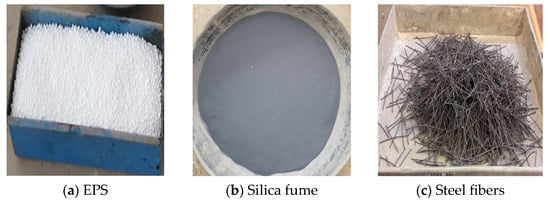
Figure 1
Open AccessArticle
Ensuring Structural Integrity: An Evaluation of Vertical Shortening in Tall Concrete Buildings
by
Esmerald Filaj, Enio Deneko, Reza Moezzi, Mohammad Gheibi and Andres Annuk
CivilEng 2024, 5(1), 191-208; https://doi.org/10.3390/civileng5010010 - 07 Feb 2024
Abstract
Vertical shortening, a phenomenon inherent to concrete structures, plays a key role in the quality and safety of construction, particularly in tall reinforced concrete buildings. This behavior is intrinsically linked to the time-dependent properties of concrete, encompassing both creep and shrinkage. Neglecting these
[...] Read more.
Vertical shortening, a phenomenon inherent to concrete structures, plays a key role in the quality and safety of construction, particularly in tall reinforced concrete buildings. This behavior is intrinsically linked to the time-dependent properties of concrete, encompassing both creep and shrinkage. Neglecting these aspects, especially when non-uniformly distributed, can give rise to various structural issues, including partition distress, overloading, and potential cracking in horizontal elements. This paper delves into the principal factors influencing vertical shortening and presents a rigorous approach to their evaluation, treating creep and shrinkage as critical parameters. The investigation employs two illustrative case studies: the first revolves around a 15-story reinforced concrete building with single columns supporting tributary areas at various levels, acting as a calibration case; the second encompasses a 30-story reinforced concrete structure employing a dual system, providing a broader perspective applicable to three-dimensional structures. A diverse array of analyses is conducted, incorporating considerations for concrete’s linear and nonlinear behavior as well as the impact of construction stages. Our findings reveal that vertical shortening is directly proportional to the building’s height and inversely related to concrete strength, longitudinal reinforcement ratios, member dimensions, volume-to-surface ratios, age of the structure upon load application, and relative humidity. Consequently, precise assessments of differential shortening effects are paramount. The utilization of staged construction analysis and time-dependent effects is recommended as the most suitable approach for evaluating vertical shortening effects.
Full article
(This article belongs to the Section Construction and Material Engineering)
►▼
Show Figures
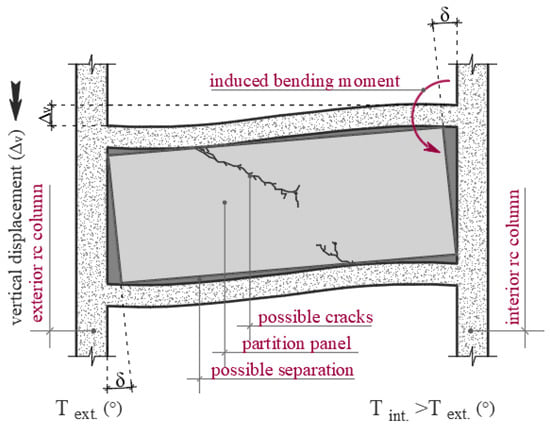
Figure 1
Open AccessArticle
Finite Element Model of Concrete-Filled, Fiber-Reinforced Polymer Tubes for Small-Scale Wind Turbine Towers
by
Yikai Gong and Martin Noël
CivilEng 2024, 5(1), 169-190; https://doi.org/10.3390/civileng5010009 - 02 Feb 2024
Abstract
The finite element method was used to study the feasibility of concrete-filled, fiber-reinforced polymer tubes (CFFTs) for small-scale wind turbine towers in remote areas. Although CFFTs have been successfully employed for a variety of structural applications, their use for wind turbine towers is
[...] Read more.
The finite element method was used to study the feasibility of concrete-filled, fiber-reinforced polymer tubes (CFFTs) for small-scale wind turbine towers in remote areas. Although CFFTs have been successfully employed for a variety of structural applications, their use for wind turbine towers is novel and has yet to be investigated in detail. The objective of the study was to identify, for the first time, the most important parameters for design and compare the behavior of CFFT towers versus conventional steel and concrete towers. The model was first validated using experimental results reported in the literature followed by a series of parametric studies to evaluate the importance of several key parameters. In the first phase, the effect of different geometric properties (taper and concrete filling ratio) and reinforcement configurations (FRP laminate configuration, steel reinforcement ratio, and prestressing level) were investigated for cantilever tower models with concentrated lateral loads. A 10 m high CFFT wind turbine tower model was subsequently modeled and studied under different loading configurations. The influence of the height-to-diameter (h/D) ratio on cantilever CFFT models was also studied and a conservative preliminary design that can be refined for specific turbine systems and wind conditions was adopted using the h/D ratio. The CFFT tower model was compared to concrete and steel tubular models with similar geometry to study the advantages of CFFT towers and showed that CFFTs can be an efficient alternative.
Full article
(This article belongs to the Special Issue Feature Papers in CivilEng)
►▼
Show Figures

Figure 1
Open AccessArticle
Artificial Neural Network Models for Determining the Load-Bearing Capacity of Eccentrically Compressed Short Concrete-Filled Steel Tubular Columns
by
Anton Chepurnenko, Vasilina Turina and Vladimir Akopyan
CivilEng 2024, 5(1), 150-168; https://doi.org/10.3390/civileng5010008 - 02 Feb 2024
Abstract
Artificial neural networks (ANN) have a great promise in predicting the load-bearing capacity of building structures. The purpose of this work was to develop ANN models to determine the ultimate load of eccentrically compressed concrete-filled steel tubular (CFST) columns of circular cross-sections, which
[...] Read more.
Artificial neural networks (ANN) have a great promise in predicting the load-bearing capacity of building structures. The purpose of this work was to develop ANN models to determine the ultimate load of eccentrically compressed concrete-filled steel tubular (CFST) columns of circular cross-sections, which operated on the widest possible range of input parameters. Short columns were considered for which the amount of deflection does not affect the bending moment. A feedforward network was selected as the neural network type. The input parameters of the neural networks were the outer diameter of the columns, the thickness of the pipe wall, the yield strength of steel, the compressive strength of concrete and the relative eccentricity. Artificial neural networks were trained on synthetic data generated based on a theoretical model of the limit equilibrium of CFST columns. Two ANN models were created. When training the first model, the ultimate loads were determined at a given eccentricity of the axial force without taking into account additional random eccentricity. When training the second model, additional random eccentricity was taken into account. The total volume of the training dataset was 179,025 samples. Such a large training dataset size has never been used before. The training dataset covers a wide range of changes in the characteristics of the pipe metal and concrete of the core, pipe diameters and wall thicknesses, as well as eccentricities of the axial force. The trained models are characterized by high mean square error (MSE) scores. The correlation coefficients between the predicted and target values are very close to 1. The ANN models were tested on experimental data for 81 eccentrically compressed samples presented in five different works and 265 centrally compressed samples presented in twenty-six papers.
Full article
(This article belongs to the Topic Artificial Intelligence (AI) Applied in Civil Engineering, 2nd Volume)
►▼
Show Figures

Figure 1
Open AccessArticle
Lateral Track Buckling in Sweden: Insights from Operators and Infrastructure Managers
by
Raheb Mirzanamadi, Erik Nyberg, Peter Torstensson and Yvonne Andersson-Sköld
CivilEng 2024, 5(1), 136-149; https://doi.org/10.3390/civileng5010007 - 02 Feb 2024
Abstract
►▼
Show Figures
Rail transport is expected to become a key component in the development of a long-term sustainable transport system. The planning, construction, operation, and maintenance of railway infrastructure are crucial in this effort. Hence, it is essential to ascertain that the railway infrastructure withstands
[...] Read more.
Rail transport is expected to become a key component in the development of a long-term sustainable transport system. The planning, construction, operation, and maintenance of railway infrastructure are crucial in this effort. Hence, it is essential to ascertain that the railway infrastructure withstands and is adapted to extreme weather conditions and climate change. This study focuses on evaluating climate adaptation measures for lateral track buckling in Sweden. Through a literature review and interview with an expert at Swedish Transport Administration, it is highlighted that the maintenance status of railway infrastructure plays a significant role in the occurrence of lateral track buckling. According to the expert, inadequate track maintenance is the primary cause of lateral track buckling rather than weather variables like air temperature. The interview also clarifies that the chain of events related to the handling of track buckling is mainly initiated by the observation of a discrete lateral irregularity by a train driver, whereupon the train dispatcher at the traffic management center stops traffic until the location in the track has been inspected by a track entrepreneur. During the inspection, up to half of the observed cases of track buckling turn out to be false.
Full article
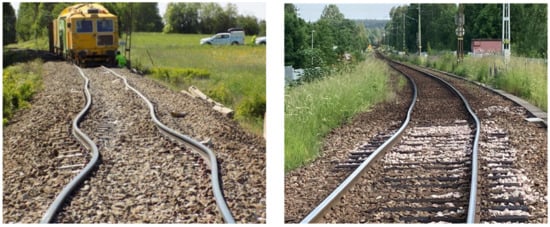
Figure 1
Open AccessReview
Exploring Shear Wave Velocity—NSPT Correlations for Geotechnical Site Characterization: A Review
by
Hasan Ali Abbas, Duaa Al-Jeznawi, Musab Aied Qissab Al-Janabi, Luís Filipe Almeida Bernardo and Manuel António Sobral Campos Jacinto
CivilEng 2024, 5(1), 119-135; https://doi.org/10.3390/civileng5010006 - 22 Jan 2024
Abstract
►▼
Show Figures
Shear wave velocity (Vs) is a critical parameter in geophysical investigations, micro-zonation research, and site classification. In instances where conducting direct tests at specific locations is challenging due to equipment unavailability, limited space, or initial instrumentation costs, it becomes essential
[...] Read more.
Shear wave velocity (Vs) is a critical parameter in geophysical investigations, micro-zonation research, and site classification. In instances where conducting direct tests at specific locations is challenging due to equipment unavailability, limited space, or initial instrumentation costs, it becomes essential to estimate Vs directly, using empirical correlations for effective site characterization. The present review paper explores the correlations of Vs with the standard penetration test (SPT) for geotechnical site characterization. Vs, a critical parameter in geotechnical and seismic engineering, is integral to a wide range of projects, including foundation design and seismic hazard assessment. The current paper provides a detailed analysis of the key findings, implications for geotechnical engineering practice, and future research needs in this area. It emphasizes the importance of site-specific calibration, the impact of geological background, depth-dependent behavior, data quality control, and the integration of Vs data with other geophysical methods. The review underlines the continuous monitoring of Vs values due to potential changes over time. Addressing these insights and gaps in research contributes to the accuracy and safety of geotechnical projects, particularly in seismic-prone regions.
Full article
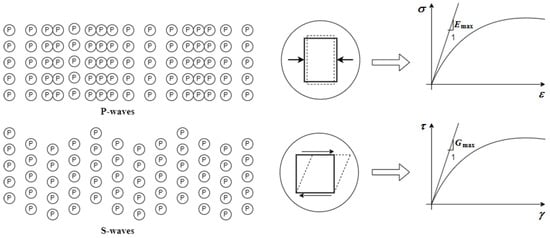
Figure 1
Open AccessArticle
A Systematic Approach to Identify and Manage Interface Risks between Project Stakeholders in Construction Projects
by
Michael C. Okika, Andre Vermeulen and Jan-Harm C. Pretorius
CivilEng 2024, 5(1), 89-118; https://doi.org/10.3390/civileng5010005 - 15 Jan 2024
Abstract
►▼
Show Figures
Interface risks are inherent in every construction project from start to finish. Identifying and managing these risks effectively in every project phase is crucial for actualising project objectives. This paper shows a comprehensive framework showing several relationships between project stakeholders and how the
[...] Read more.
Interface risks are inherent in every construction project from start to finish. Identifying and managing these risks effectively in every project phase is crucial for actualising project objectives. This paper shows a comprehensive framework showing several relationships between project stakeholders and how the interface risks between them that influence project execution are identified and managed for the overall construction project success. Firstly, a literature review on interfaces and interface risks and a discussion on how organisations managed interface risks were carried out, and secondly, the collection of quantitative data was conducted by means of structured online questionnaires. The sample consisted of 205 construction project professionals who were selected randomly. This group included individuals with various roles in the construction industry. The data were analysed using descriptive statistical methods, including factor analysis, reliability assessment, and calculations of frequencies and percentages. The results showed all the factors, work cultures, and organisational approaches that influence interface risk management and ways to identify and manage interface risks effectively. Effective stakeholder management is crucial for effective interface risk management since many interface risks are created by the numerous stakeholders involved in the project and the proposed frameworks will effectively mitigate the consequences and causes of interface risks. Effectively mitigating these risks involves effective stakeholder management, building information modelling volume strategy, and creating a virtual construction model during the construction phase; in addition, construction supply chain risks must be carefully identified during the interfaces establishment stages; interface risks must be carefully identified during the conceptualisation; and the planning, construction, and execution stages and standard methods and procedures must be defined to effectively identify and manage interface risks as the occur in the project lifecycle plus implementing the proposed risk mitigation frameworks.
Full article
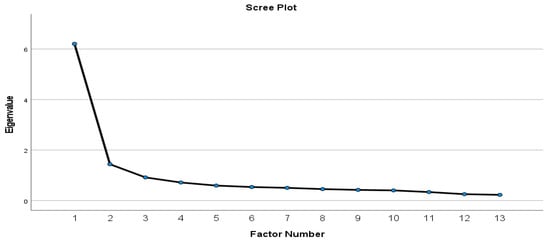
Figure 1
Open AccessArticle
Factors Affecting Properties of Polymer Grouted Sands
by
Costas A. Anagnostopoulos and Vasilios Aggelidis
CivilEng 2024, 5(1), 65-88; https://doi.org/10.3390/civileng5010004 - 11 Jan 2024
Abstract
►▼
Show Figures
The aim of this research was to undertake laboratory testing to investigate the beneficial effects of epoxy resin grouts on the physical and mechanical properties of sands with a wide range of granulometric characteristics. Six sands of different particle size and uniformity coefficients
[...] Read more.
The aim of this research was to undertake laboratory testing to investigate the beneficial effects of epoxy resin grouts on the physical and mechanical properties of sands with a wide range of granulometric characteristics. Six sands of different particle size and uniformity coefficients were grouted using epoxy resin solutions with three ratios of epoxy resin to water (3.0, 2.0 and 1.5). A set of unconfined compressive strength tests were conducted on the grouted samples at different curing periods and a set of long-term unconfined compressive creep tests in dry and wet conditions after 180 days of curing were also carried out in order to evaluate the development of the mechanical properties of the sands, as well as the impact of water on them. The findings of the investigation showed that epoxy resin resulted in appreciable strength values in the specimens, especially those of fine sands or well graded sands, grouted with the different epoxy resin grouts. Whilst the higher compressive strength and elastic modulus values at the age of 180 days were obtained for the finer sand, which ranged from 2.6 to 5.6 MPa and 216 to 430 MPa, respectively, the lower compressive strength and elastic modulus values were attained for the coarser sand with low values of the coefficient of uniformity, which varied from 0.68 to 2.2 MPa and 75 to 185 MPa, respectively. Moreover, all grouted sands showed stable long-term creep behaviour, with high values of the creep limit ranging from 67.5 to 80% of compressive strength. The presence of water had a negative marginal effect in the majority of the grouted specimens. In terms of physical properties, the permeability and porosity were estimated. The permeability of fine sands or well graded sands was decreased by two to four orders of magnitude. Using laboratory results and regression analysis, three mathematical equations were developed that relate each of the dependent variables of compressive strength, elastic modulus and coefficient of permeability to particular explanatory variables.
Full article
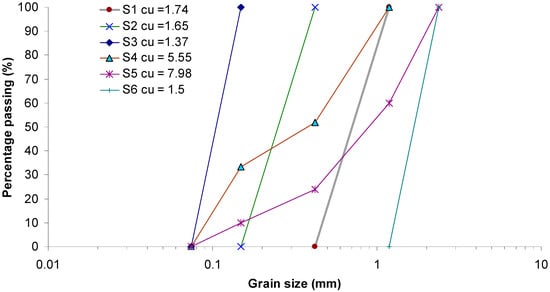
Figure 1
Open AccessArticle
High Glass Waste Incorporation towards Sustainable High-Performance Concrete
by
Othon Moreira, Aires Camões, Raphaele Malheiro and Carlos Jesus
CivilEng 2024, 5(1), 41-64; https://doi.org/10.3390/civileng5010003 - 10 Jan 2024
Abstract
The use of waste as supplementary cementitious materials (SCMs) in concrete is already widespread, with glass waste being an increasingly used option. The utilization of glass waste as a partial substitute for cement in small proportions has shown satisfactory outcomes. Nevertheless, substituting cement
[...] Read more.
The use of waste as supplementary cementitious materials (SCMs) in concrete is already widespread, with glass waste being an increasingly used option. The utilization of glass waste as a partial substitute for cement in small proportions has shown satisfactory outcomes. Nevertheless, substituting cement in high proportions requires further investigation. Experimental research was carried out on the mechanical and durability properties of concrete with the replacement of cement by glass powder (GP), at a high volume equal to 50%. Binder content (cement plus GP) varied from 300 to 500 kg/m3. The results are promising regarding the use of the high volume of GP in high-performance concretes. The specimens with 500 kg/m3 of binder (50% of which was GP-G250) achieved almost 55 MPa at 28 days. The specimen with the lowest resistance was G150, with 32 MPa. This result may be related to the high pozzolanic activity index of the used GP. The specimens with GP showed satisfactory performance regarding chloride migration, with diffusion coefficients always below those of the reference specimens. The G250 concrete showed a reduction of 58%. Regarding open porosity, concretes with 50% GP had a lower porosity than the reference concretes. The smallest reduction (21%) occurred in the G150 concrete. The reduction in porosity provided by the fineness of the GP may be the main cause of this high performance. Concerning capillary absorption, the GP concretes have a reduction that varies between 47% for G150 and 67% for G250. This fact may be related to the existence of a larger quantity of larger-sized capillary pores in the reference concretes.
Full article
(This article belongs to the Special Issue High-Performance Concrete and Durability of Concrete Structures)
►▼
Show Figures

Figure 1
Open AccessArticle
Optimizing Sustainability of Concrete Structures Using Tire-Derived Aggregates: A Performance Improvement Study
by
Zeinab A. Younis and Maryam Nazari
CivilEng 2024, 5(1), 30-40; https://doi.org/10.3390/civileng5010002 - 29 Dec 2023
Abstract
Tire-derived aggregate concrete (TDAC), or rubberized concrete, is gaining ground as an eco-friendly option in civil engineering. By substituting traditional coarse aggregates with recycled rubber tires, TDAC offers a greener choice with excellent energy absorption capabilities. This leads to robust structures and reduced
[...] Read more.
Tire-derived aggregate concrete (TDAC), or rubberized concrete, is gaining ground as an eco-friendly option in civil engineering. By substituting traditional coarse aggregates with recycled rubber tires, TDAC offers a greener choice with excellent energy absorption capabilities. This leads to robust structures and reduced upkeep expenses. Nonetheless, TDAC’s lower strength than regular concrete requires a delicate balance between energy absorption and strength. This study investigates two enhancements to TDAC performance: (a) the impact of sodium hydroxide (NaOH) solution pretreatment and SikaLatex bonding agent addition on TDAC’s compressive strength, and (b) the use of varying water–cement ratios and superplasticizer to enhance TDAC’s mechanical properties. This study involves concrete cylinder compression tests and the creation of strength estimation equations. Results show that NaOH-treated tire-derived aggregate (TDA) boosts workability, increasing slump by 4.45 cm (1.75 in), yet does not significantly enhance compressive strength, causing a 34% reduction. Conversely, combining NaOH pretreatment with Sikalatex bonding agent enhances workability by 28% and boosts compressive strength by 21% at the same water-cement ratio. To optimize performance, it is advised to employ modified TDA concrete with a water–cement ratio under 0.34 and superplasticizer. These findings highlight the potential of modified TDA concrete in sustainable and seismic-resistant designs.
Full article
(This article belongs to the Topic Pathways to Sustainable Construction: Innovations in New Materials, Construction Techniques, and Management Practices)
►▼
Show Figures
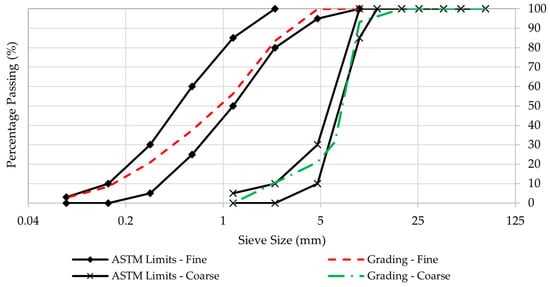
Figure 1
Open AccessArticle
Scene Understanding for Dimensional Compliance Checks in Mixed-Reality
by
Michelle Siu Zhi Lee, Nobuyoshi Yabuki and Tomohiro Fukuda
CivilEng 2024, 5(1), 1-29; https://doi.org/10.3390/civileng5010001 - 27 Dec 2023
Abstract
►▼
Show Figures
Building inspections are critical for ensuring compliance with construction standards, but conventional methods, often manual, face challenges in efficiency and consistency due to heavy reliance on human factors. Mixed-reality (MR) solutions could potentially address these challenges as they reportedly achieve good efficiency and
[...] Read more.
Building inspections are critical for ensuring compliance with construction standards, but conventional methods, often manual, face challenges in efficiency and consistency due to heavy reliance on human factors. Mixed-reality (MR) solutions could potentially address these challenges as they reportedly achieve good efficiency and accuracy in mapping indoor environments. This research investigates the potential of utilizing a wearable MR device to perform dimensional checks through edge computing of device sensor data, reducing the reliance on human factors. The accuracy of MR-computed dimensions against ground truth data for common building elements was assessed. Results indicate that MR-computed dimensions align well with ground truth for simple objects, but complex objects such as staircases presented limitations in achieving satisfactory results. If-then checks applied to MR-computed dimensions for automated detection of non-compliance were successfully experimented. However, automating compliance checks for standards with complex rules requires further investigation. This research sheds light on the potential of MR solutions for building inspections and highlights future research directions to enhance its applicability and effectiveness in the construction industry.
Full article
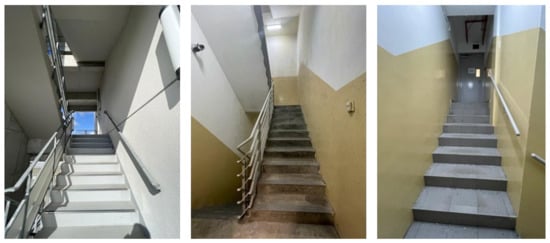
Figure 1
Open AccessArticle
Developing a Sprayed-Glass Fiber-Reinforced Polymer Retrofitting System for Decommissioned Wooden Utility Poles
by
Amr E. Abdallah, Shukai Chen and Ehab F. El-Salakawy
CivilEng 2023, 4(4), 1243-1262; https://doi.org/10.3390/civileng4040069 - 18 Dec 2023
Abstract
Wooden utility poles are vulnerable to degradation and decay, which requires maintenance or replacement. The strengthening and retrofitting techniques for wooden poles are either prone to corrosion or encountering installation difficulties. However, the use of sprayed fiber-reinforced polymer (FRP) composites seems to be
[...] Read more.
Wooden utility poles are vulnerable to degradation and decay, which requires maintenance or replacement. The strengthening and retrofitting techniques for wooden poles are either prone to corrosion or encountering installation difficulties. However, the use of sprayed fiber-reinforced polymer (FRP) composites seems to be a viable solution as it has proven its efficiency and applicability for reinforced concrete members and connections. This study includes a comprehensive experimental program where the mechanical properties of the sprayed-glass FRP (GFRP) composite was evaluated in terms of tensile, compressive and shear strength, in addition to its bond strength to wood and confinement efficiency. Afterwards, the results of the material testing phase were implemented on full-scale old utility poles to evaluate their structural performance with varying composite thicknesses and sprayed zone lengths. The behavior of the retrofitted poles reflected remarkable effectiveness for the sprayed-GFRP composite and highlighted the need for a design model for the optimum length for the sprayed zone. Two simplified analytical models were introduced which predicted the failure loads and locations for the tested poles and estimated the required length for the retrofitted zone, which all agreed well with the experimental results of the tested poles.
Full article
(This article belongs to the Section Structural and Earthquake Engineering)
►▼
Show Figures

Figure 1
Highly Accessed Articles
Latest Books
E-Mail Alert
News
Topics
Topic in
Applied Sciences, CivilEng, Energies, Eng, Materials, Remote Sensing, Sensors
Applications of Non-destructive Testing Technologies in Materials or Engineering
Topic Editors: Qiuwei Yang, Zhigang Zhang, Hui Wang, Fengjiang Qin, Xi PengDeadline: 31 May 2024
Topic in
AI, Applied Sciences, Buildings, CivilEng, Mathematics, Symmetry, Water
Artificial Intelligence (AI) Applied in Civil Engineering, 2nd Volume
Topic Editors: Nikos D. Lagaros, Stelios K. Georgantzinos, Denis IstratiDeadline: 30 June 2024
Topic in
Buildings, CivilEng, Construction Materials, Infrastructures, Materials
Novel Cementitious Materials
Topic Editors: Peiyu Yan, Yao Luan, Chunsheng ZhouDeadline: 30 November 2024
Topic in
Applied Sciences, CivilEng, Materials, Remote Sensing, Sensors
Recent Advances in Structural Health Monitoring, 2nd Volume
Topic Editors: Giuseppe Lacidogna, Alessandro Grazzini, Gianfranco Piana, Sanichiro Yoshida, Guang-Liang Feng, Jie XuDeadline: 31 December 2024

Conferences
Special Issues
Special Issue in
CivilEng
"Stability of Structures", in Memory of Prof. Marcello Pignataro
Guest Editors: Giuseppe Ruta, Angelo LuongoDeadline: 25 April 2024
Special Issue in
CivilEng
Site-Specific Seismic Design of Buildings
Guest Editors: Nelson Lam, Elisa LumantarnaDeadline: 30 June 2024
Topical Collections
Topical Collection in
CivilEng
Recent Advances and Development in Civil Engineering
Collection Editors: Angelo Luongo, Simona Di Nino


